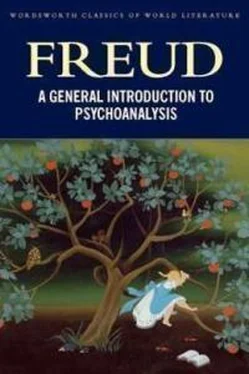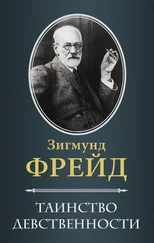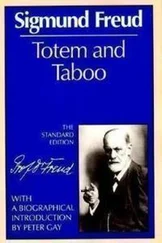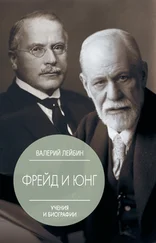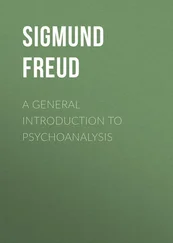[30]"steigen."
[31]"den Frauen nachsteigen," and "ein alter Steiger."
Eleventh Lecture
The Dream
The Dream–Work
If you have mastered dream censorship and symbolic representation, you are, to be sure, not yet adept in dream distortion, but you are nevertheless in a position to understand most dreams. For this you employ two mutually supplementary methods, call up the associations of the dreamer until you have penetrated from the substitute to the actual, and from your own knowledge supply the meaning for the symbol. Later we shall discuss certain uncertainties which show themselves in this process.
We are now in a position to resume work which we attempted, with very insufficient means at an earlier stage, when we studied the relation between the manifest dream elements and their latent actualities, and in so doing established four such main relationships: that of a part of the whole, that of approach or allusion, the symbolic relationship and plastic word representation. We shall now attempt the same on a larger scale, by comparing the manifest dream content as a whole, with the latent dream which we found by interpretation.
I hope you will never again confuse these two. If you have achieved this, you have probably accomplished more in the understanding of the dream than the majority of the readers of my Interpretation of Dreams . Let me remind you once more that this process, which changes the latent into the manifest dream, is called dream–work . Work which proceeds in the opposite direction, from the manifest dream to the latent, is our work of interpretation . The work of interpretation attempts to undo the dream–work. Infantile dreams that are recognized as evident wish fulfillments nevertheless have undergone some dream–work, namely, the transformation of the wish into reality, and generally, too, of thoughts into visual pictures. Here we need no interpretation, but only a retracing of these transformations. Whatever dream–work has been added to other dreams, we call dream distortion , and this can be annulled by our work of interpretation.
The comparison of many dream interpretations has rendered it possible for me to give you a coherent representation of what the dream–work does with the material of the latent dream. I beg of you, however, not to expect to understand too much of this. It is a piece of description that should be listened to with calm attention.
The first process of the dream–work is condensation . By this we understand that the manifest dream has a smaller content than the latent one, that is, it is a sort of abbreviated translation of the latter. Condensation may occasionally be absent, but as a rule it is present, often to a very high degree. The opposite is never true, that is, it never occurs that the manifest dream is more extensive in scope and content than the latent. Condensation occurs in the following ways: 1. Certain latent elements are entirely omitted; 2. only a fragment of the many complexes of the latent dream is carried over into the manifest dream; 3. latent elements that have something in common are collected for the manifest dream and are fused into a whole.
If you wish, you may reserve the term "condensation" for this last process alone. Its effects are particularly easy to demonstrate. From your own dreams you will doubtless recall the fusion of several persons into one. Such a compound person probably looks like A., is dressed like B., does something that one remembers of C., but in spite of this one is conscious that he is really D. By means of this compound formation something common to all four people is especially emphasized. One can make a compound formation of events and of places in the same way as of people, provided always that the single events and localities have something in common which the latent dream emphasizes. It is a sort of new and fleeting concept of formation, with the common element as its kernel. This jumble of details that has been fused together regularly results in a vague indistinct picture, as though you had taken several pictures on the same film.
The shaping of such compound formations must be of great importance to the dream–work, for we can prove, (by the choice of a verbal expression for a thought, for instance) that the common elements mentioned above are purposely manufactured where they originally do not exist. We have already become acquainted with such condensation and compound formations; they played an important part in the origin of certain cases of slips of the tongue. You recall the young man who wished to inscort a woman. Furthermore, there are jokes whose technique may be traced to such a condensation. But entirely aside from this, one may maintain that this appearance of something quite unknown in the dream finds its counterpart in many of the creations of our imagination which fuse together component parts that do not belong together in experience, as for example the centaurs, and the fabulous animals of old mythology or of Boecklin's pictures. For creative imagination can invent nothing new whatsoever, it can only put together certain details normally alien to one another. The peculiar thing, however, about the procedure of the dream–work is the following: The material at the disposal of the dream–work consists of thoughts, thoughts which may be offensive and unacceptable, but which are nevertheless correctly formed and expressed. These thoughts are transformed into something else by the dream–work, and it is remarkable and incomprehensible that this translation, this rendering, as it were, into another script or language, employs the methods of condensation and combination. For a translation usually strives to respect the discriminations expressed in the text, and to differentiate similar things. The dream–work, on the contrary, tries to fuse two different thoughts by looking, just as the joke does, for an ambiguous word which shall act as a connecting link between the two thoughts. One need not attempt to understand this feature of the case at once, but it may become significant for the conception of the dream–work.
Although condensation renders the dream opaque, one does not get the impression that it is an effect of dream censorship. One prefers to trace it back to mechanical or economic conditions; but censorship undoubtedly has a share in the process.
The results of condensation may be quite extraordinary. With its help, it becomes possible at times to collect quite unrelated latent thought processes into one manifest dream, so that one can arrive at an apparently adequate interpretation, and at the same time conceive a possible further interpretation.
The consequence of condensation for the relation between latent and manifest dreams is the fact that no simple relations can exist between the elements of the one and the other. A manifest element corresponds simultaneously to several latent ones, and vice versa, a latent element may partake of several manifest ones, an interlacing, as it were. In the interpretation of the dream it also becomes evident that the associations to a single element do not necessarily follow one another in orderly sequence. Often we must wait until the entire dream is interpreted.
Dream–work therefore accomplishes a very unusual sort of transcription of dream thoughts, not a translation word for word, or sign for sign, not a selection according to a set rule, as if all the consonants of a word were given and the vowels omitted; nor is it what we might call substitution, namely, the choice of one element to take the place of several others. It is something very different and much more complicated.
The second process of the dream–work is displacement . Fortunately we are already prepared for this, since we know that it is entirely the work of dream censorship. The two evidences of this are firstly, that a latent element is not replaced by one of its constituent parts but by something further removed from it, that is, by a sort of allusion; secondly, that the psychic accent is transferred from an important element to another that is unimportant, so that the dream centers elsewhere and seems strange.
Читать дальше
